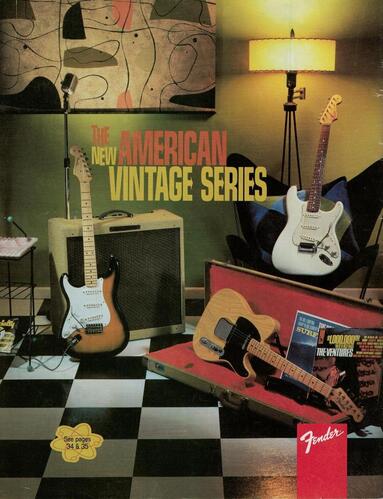THE NEW REISSUES: THE AMERICAN VINTAGE STRATOCASTERS


|
One of the most important challenges for Fender at the end of the '90s was renewing the 1982 Vintage Series. The primary stimulus, that led in 1998 at the re-edition of the American Vintage '57 Stratocaster and American Vintage '62 Stratocaster, was connected to the new construction techniques. The old reissues were the best that Fender could make at first, in the '80s. But thanks to the new machinery and to the studies for the Time Machine Series conducted by Michael Stevens, master builder at the Fender Custom Shop, everything seemed achievable.
Regarding this, Mike Lewis remembers how Fender could now afford a wider use of nitro lacquers. While environmental pollution laws in California were very strict, the containment system of the new factory was so advanced that “the air coming out is actually cleaner than the air going in!” While the clear coat and the color were lacquer-based, the bottom was polyester, although much thinner than that of the end of the CBS period. |
|
The success of the Pure Vintage Stratocasters was enormous, as Richard McDonald stressed, “We rediscovered our past in a very significant way. It was an awakening.”
The first 46 units from the first production of this instrument sported a commemorative Special Edition “1st 46” neck plate and randomly distributed around the globe. These neck plates commemorate the fact that Fender was founded in 1946, as well as the fact that Fender is releasing the most accurate and beautiful Fender reissue instruments ever from key historical years. The serial numbers of the series and the 46 instruments were not sequential, and among the first 46, were a mix of colors. |

|
© COPYRIGHT 2014-2024 FUZZFACED.NET BY ANTONIO CALVOSA - TUTTI I DIRITTI RISERVATI
La copia, la riproduzione, la pubblicazione e la redistribuzione dei contenuti, se non autorizzate espressamente dall'autore, sono vietate in qualsiasi modo o forma. |

|
© COPYRIGHT 2014-2024 FUZZFACED.NET BY ANTONIO CALVOSA - ALL RIGHTS RESERVED
The copying, reproduction, publication and redistribution of the contents, unless expressly authorized by the author, are prohibited in any way or form. |